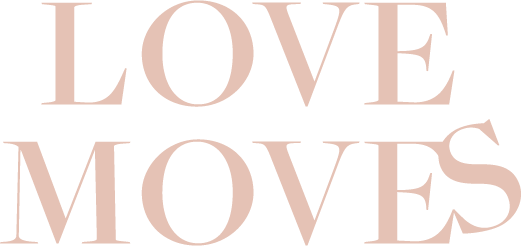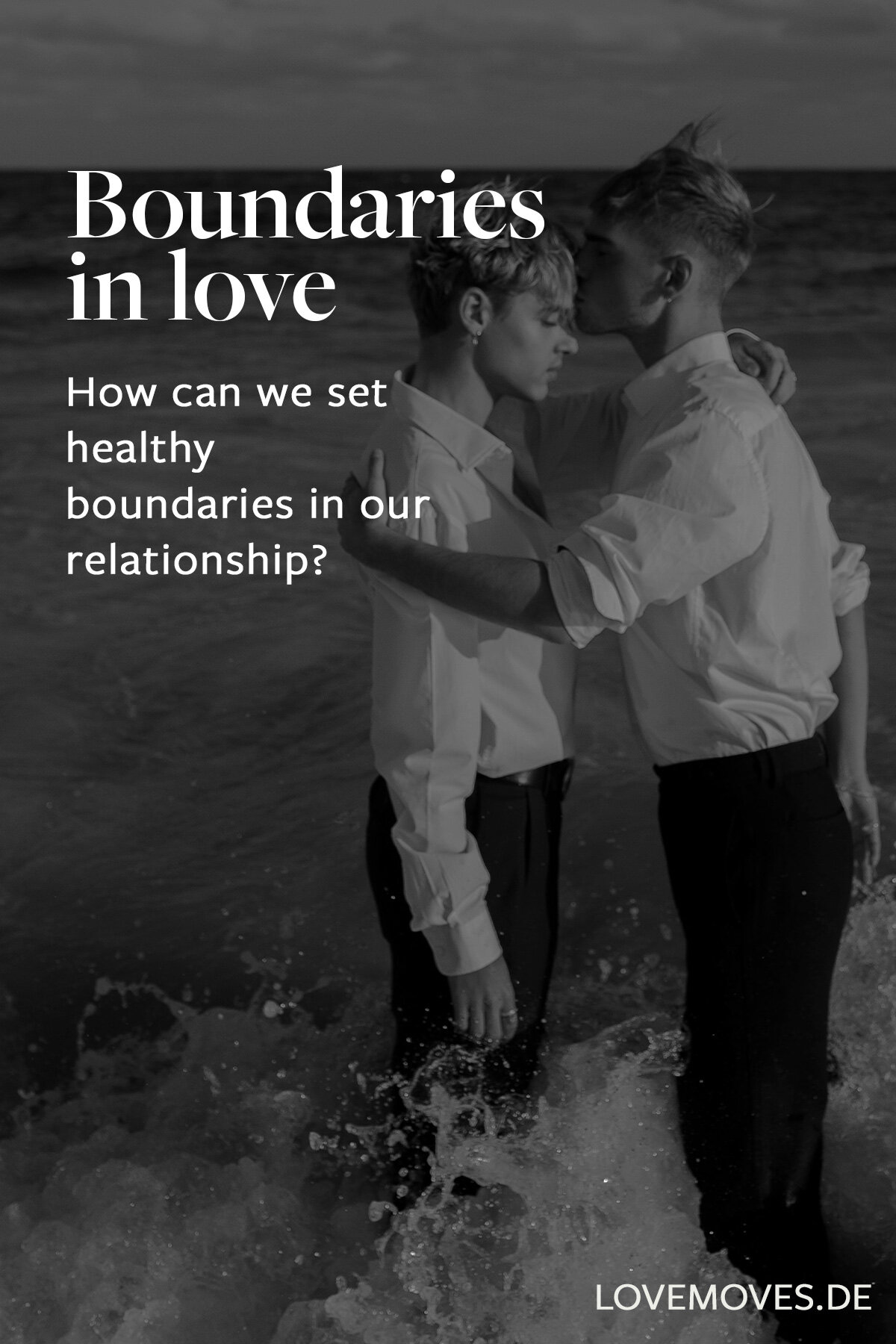How can we set healthy boundaries in our relationship?
Boundaries. How ambivalent we are about them. On the one hand, most of us have created a life with as few boundaries as possible. We decide for ourselves what we eat, how we live our values, what we still want to achieve in life. We have chosen our significant other, our profession, where we feel at home. But above all, we have learned that when we love someone, there is no room for boundaries. But when we have learned that freedom and a world without borders are the non plus ultra, we can lose ourselves, find ourselves treated unfairly or suffer unnecessarily. In this article I would like to give you a new perspective on boundaries - and show you how we can also set healthy boundaries in relationships.
What hinders us to set limits?
How to set healthy boundaries in your relationship? Share this article with someone who is important to you and show them that you think of them.
We often don't allow ourselves boundaries because we create distance because we seek closeness - and boundaries seems like putting up walls: Maybe the other person does not like me anymore? Maybe I reject them too much, I am too harsh? Shouldn’t it be my „job to make my loved ones happy“?
If you think something like this, changes are high that your boundaries were not respected in childhood and youth - and you gave up defending them? Maybe you have learned that anger is something bad and indecent and therefore you cannot communicate boundaries clearly? Maybe you do not even accept that boundaries are especially important in close relationships?
Why do we need boundaries in our relationship?
Without boundaries we take the anger of our partner personally. We feel responsible for the frustration, disappointment, suffering, mood swings of our loved ones - and thus feel guilty, helpless and are walking like on eggshells. Without healthy boundaries we believe every accusation. Without boundaries we allow verbal, emotional, financial and physical violence. We allow things to happen to us that we are ashamed of. We forget ourselves. Without boundaries we sometimes feel we are in the wrong film: Did I really say that? Did I really allow that to happen? Did that really just happen?
And we often react to that just as destructively. We call for a counter-attack, we stonewall, we insult, we take offence, we pout, remain silent, withdraw, seek confirmation elsewhere. And that in turn hurts our beloved as well. A vicious circle begins.
This could be interesting for you: How to stop the escalation when fighting?
Truth is, you cannot force the other person to change his behavior & become a „better version of themselves“. The person who can most easily - and certainly - steer your life in the right direction is you. And if you are in doubt, let me assure you: You have so much power & strength within you. And maybe you just need a new perspective on boundaries to take the next step.
Boundaries do not automatically create distance. Boundaries create structure in our relationships.
A new perspective on boundaries can help you move forward with your thoughts. For me, boundaries add clarity & structure. Take a look at this text.
Every subheading, every paragraph, every point is actually like a boundary between thoughts. This text would not be readable without all these points, paragraphs, commas.
When writing, we automatically use a whole repertoire of boundaries and we consciously use the characters in a way that we are understood.
If I were to begin a new paragraph after each sentence, for example, it would no longer be a column - but at most a poem. If I only put dots and never a comma, this text would be very hard & choppy to read. Sometimes I use dashes, which are quasi small restrictions. And a semicolon would mean that there are even more areas to which my statement applies. All these characters help you to understand me better.
Setting healthy boundaries means using the right signs at the right time
And it is the same with boundaries in our relationship. By communicating, we create orientation, clarity - and boundaries. It’s on me to set the right signals at the right time. Playfully and fitting to the statement. Keeping an eye on you, the reader. Setting boundaries does not have to be aggressive.
Assertive vs. aggressive. What’s the difference in setting boundaries?
There is a fine but important difference between aggressive and assertive. Aggressive would be to end each sentence with an exclamation mark! So that you understand me! Probably you would have stopped after three sentences if I had ended! every! sentence! Like this! In the same way, it is important to set different signs in our communication.
What signs can I use to set boundaries?
We can set boundaries less hard by providing more information. It’s like putting a comma. In communication, for example, this can be a justification or a friendly response to my counterpart: "Thank you for telling me that. Thank you for your honesty. I need this or that.“
Furthermore, we have the option to not only set linguistic signs, but also use our body and our voice. More than 50% of our communication is done through non-verbal signs, a little more than 30% through our tone of voice - our words have very little meaning in comparison.
So I can be strict with my words & show someone that they are important to me with my gestures. I can talk calmly & confidently. Instead of subjective evaluations like "You're an idiot" I can stay on the factual level: "I see it differently.“
Sometimes I can also set a limit with a simple, minimalist "no" - or, in fact, it is even important to do so. "No" is a complete sentence. Sometimes I have to get loud & angry. Also in written texts, we see an exclamation mark from time to time.
An example of boundary drawing
Let us go through these boundaries using sex as an example: With some people, in some situations, under some conditions you do not want to have sex. No is no. You do not have to justify this.
With your favorite person it probably looks different. Here the communication may be softer. You probably want to have sex with your darling, but maybe you are just burnt out and exhausted. So it's more of a "not now, but later." A semicolon would be: "Let's be romantic and tender today - even if I like it a bit wilder otherwise." Of course, you can say all this brusquely without looking at your partner - or you can take him/her by the hand when you say "no" and say lovingly that you simply need more seduction and cannot accelerate from 0 to 100.
But since every person and every relationship is different, there is no general answer here as to which sign of borderline is the "right" one. Therefore I would like to encourage you: Allow yourself to get to know & try out your signs yourself. If you need a more personal coaching, a couples therapy could be great way to learn and improve your communication in your partnership.
My name is Dr. Sharon Brehm and I offer systemic couple therapy and EFT couple therapy in Munich. My office for single and couple therapy is right in the center of Munich.
On my blog you will find all interessting thoughts about love and relationships: From interviews with other couple therapists, to information about emotions and relationship advice. Right now, I’m translating my articles step by step - if you are impatient, check the German version and have a look there :)
If you want to get to know me more, you can find me also on Instagram! If you prefer videos: I also have a few YouTube videos on my channel (though in German, but maybe this is the time to work on your language skills too ;) . You’d help me a lot, if you subscribe to it!
Photo credit: Pricilla Du Preez via unsplash










